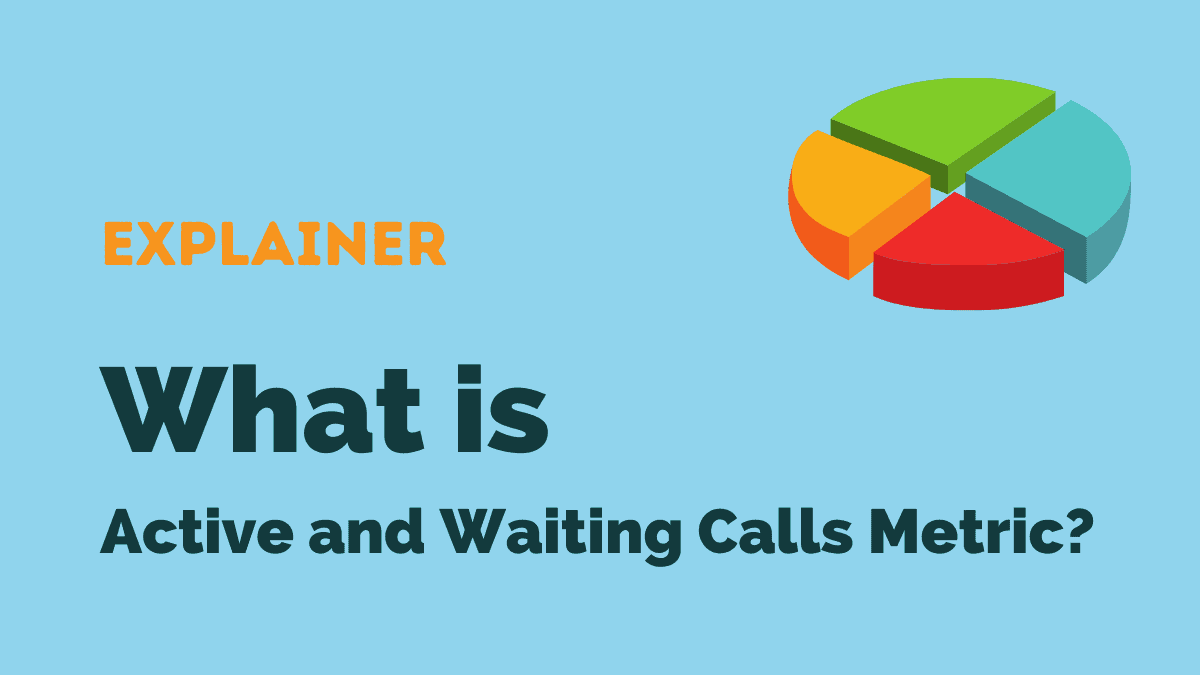What is the active waiting calls metric?
Active and waiting calls is a metric that measures how well teams handle call volumes in real-time. It allows the contact center management to see how many calls agents take against how many are on hold.
An excessive number of calls on hold results in:
- Bad customer experience
- Decreased customer retention
- Agents wearing down at a high rate
Why is the active waiting calls metric important?
Active and waiting calls metric is a Key Performance Indicator (KPI) that measures the effectiveness of customer service teams. The KPI is used in call centers to track performance, agent productivity, and other actions that improve customer satisfaction.
Customer service managers use KPIs to track how successfully and efficiently a call center solution accomplishes company objectives.
How do you calculate active waiting calls?
Use the formula below to calculate your call center’s active waiting calls at any moment:

Businesses use the active and waiting calls KPI to compare their call traffic to the number of callers in queue.
It is a real-time status measure that you can should communicate with all of your agents, allowing them to so they can see what they can expecthow they’re doing.
It’s tempting to urge agents You should urge your agents to settle calls quickly at this point, and to get to the next caller in line. However, this is widely associated with poor call outcomes and negative customer experience.
On top of that, speeding up service may not even help! Hurrying agents can easily lower your rate of First Contact Resolution and lead to more incoming queries.
How can you improve your active waiting calls performance?
Aiding the consumer while getting them off the phone quickly is challenging, especially when keeping costs low.
Here are pointers to help you improve your active waiting calls performance.
Monitor agent call performance
Make sure your call center software allows you to listen in on conversations. You can talk to your agents during a live call (during which only the agent can hear you) and actively participate in and engage in complex calls.
These listening features enable you to detect where client interactions are going wrong.
Call monitoring is a crucial tool for:
- Speeding up agent training
- Minimizing escalated calls to management
- Reducing call transfers in the call center
Enhance call routing
Call center software with excellent call routing decreases the handling time by directing the call to the most qualified person. It’s critical to ensure your routing system is up to date and capable of meeting your company’s specific needs.
Consider employing an automated self-service queue for everyday concerns like tracking a parcel, resetting a password, or paying a bill. At babelforce, we offer integration and system upgrades to make customer service easier.
Keep customer information updated
Make sure your software has integration capabilities. This way, when an agent updates information in one system, the same information is updated in all integrated business tools.
It reduces the need to access multiple programs at once. Train your sales and call center agents to check and update any old or inaccurate client information regularly.
Get creative with your on-hold message
The music you choose for your call queue can also impact how long a customer is willing to wait. When looking for on-hold music, keep your target audience in mind, but as a general rule, make the music light and happy.
Customized scripts, which discuss your latest product or service offering instead of on-hold music, are another choice.




